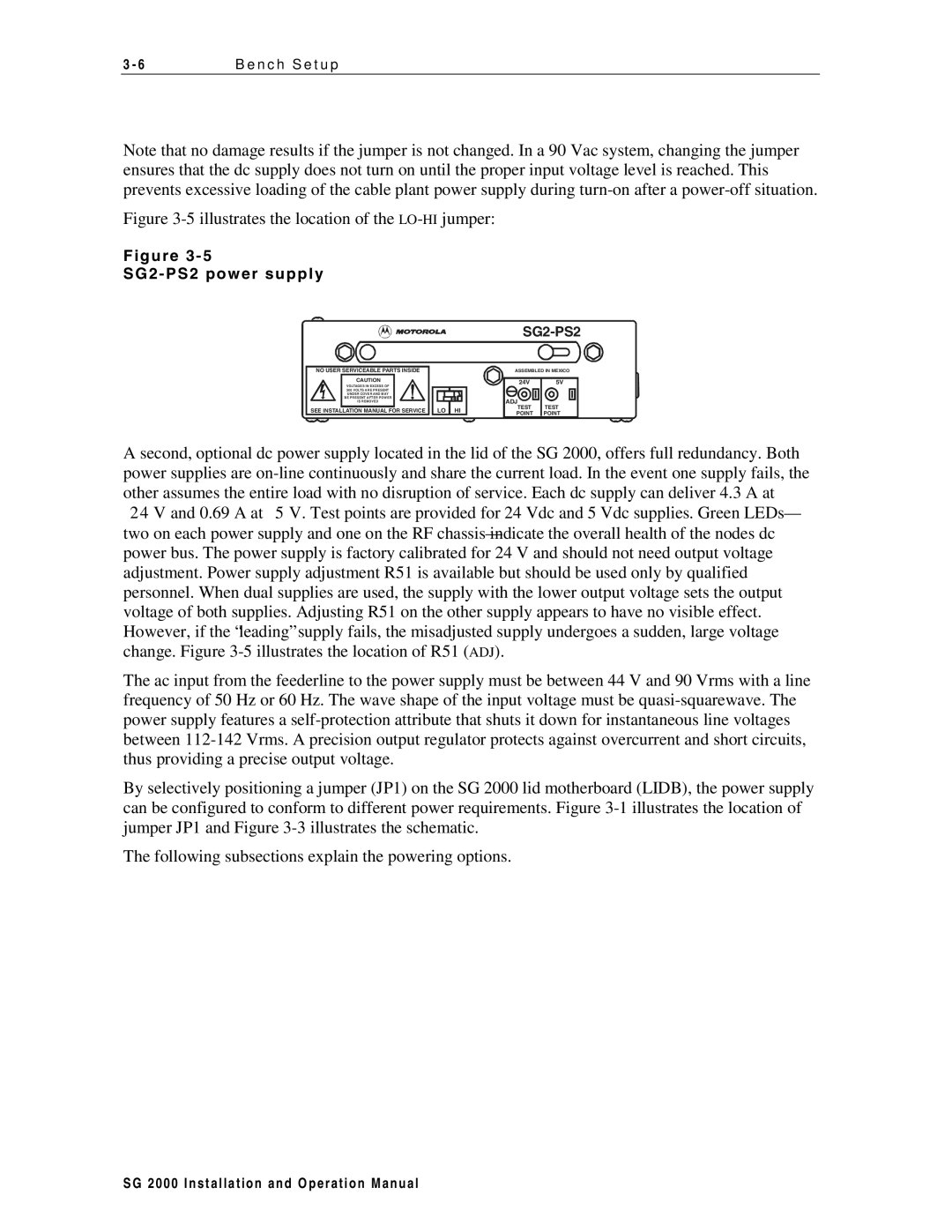
3 - 6 | B e n c h S e t u p |
Note that no damage results if the jumper is not changed. In a 90 Vac system, changing the jumper ensures that the dc supply does not turn on until the proper input voltage level is reached. This prevents excessive loading of the cable plant power supply during
Figure 3-5 illustrates the location of the LO-HI jumper:
F i g u r e 3 - 5
S G 2 - P S 2 p o w e r s u p p l y
SG2-PS2
NO USER SERVICEABLE PARTS INSIDE |
|
|
|
|
| ASSEMBLED IN MEXICO | ||||
CAUTION |
|
|
|
|
|
| 24V |
| 5V | |
VOLTAGE S IN EXCESS OF |
|
|
|
|
|
|
|
|
|
|
300 VOLTS A R E PR ESENT |
|
|
|
|
|
|
|
|
|
|
U ND ER COVE R A ND M AY |
|
|
|
|
|
|
|
|
|
|
B E PR ESENT A FT ER POW ER |
|
|
|
| ADJ |
|
|
| ||
IS R EMOVED |
|
|
|
|
|
|
| |||
SEE INSTALLATION MANUAL FOR SERVICE | LO | HI |
|
| TEST |
| TEST | |||
|
|
|
|
|
| POINT |
| POINT | ||
A second, optional dc power supply located in the lid of the SG 2000, offers full redundancy. Both power supplies are
The ac input from the feederline to the power supply must be between 44 V and 90 Vrms with a line frequency of 50 Hz or 60 Hz. The wave shape of the input voltage must be
By selectively positioning a jumper (JP1) on the SG 2000 lid motherboard (LIDB), the power supply can be configured to conform to different power requirements. Figure
The following subsections explain the powering options.
S G 2 0 0 0 I n s t a l l a t i o n a n d O p e r a t i o n M a n u a l
